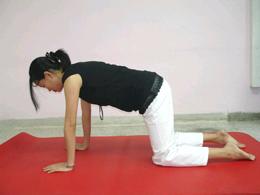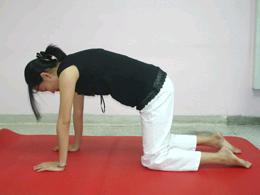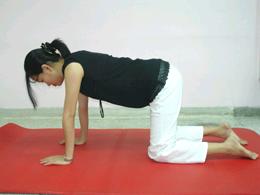Antenatal exercise is exercise during pregnancy. You are recommended to exercise throughout the pregnancy but reduce the number of repetition of the exercises per session as your pregnancy progress.
Benefits of antenatal exercise
- Promote good posture.
- Relax whole body.
- Prepare body for easy delivery by stengthening and streching muscles.
- Help to speed up the recovery to normal weight.
- Reduce the risk of gestational diabetes and hypertension.
Types of exercises
Although you are pregnant, you should continue to exercise with moderate intensity and if you have not started, start now. Here are the exercises suitable for you :
- Circulatory exercise
- Stretching exercises
- Leg
- Arm
- Breathing exercise
- Back stretch
- Neck exercise
- Abdominal exercise
- Pelvic tilting
- Pelvic floor exercise (Kegel’s exercise)
Circulatory Exercise
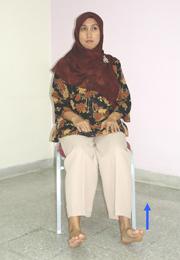 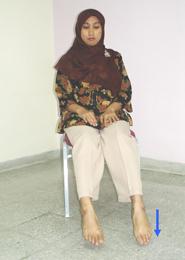 |
|
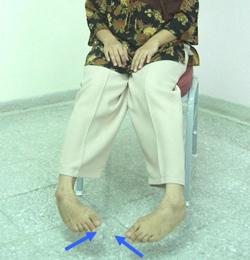 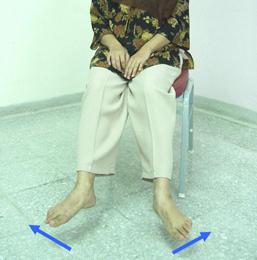 |
|
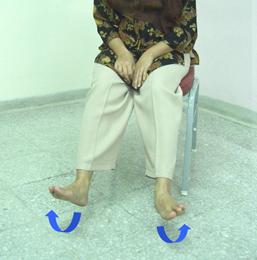 |
|
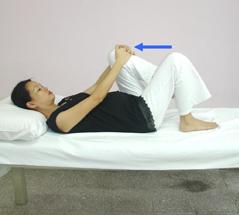 |
|
Stretching exercises
|
  |
|
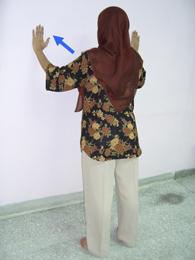 |
|
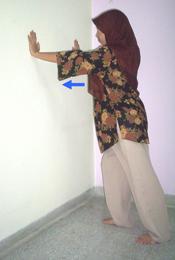 |
|
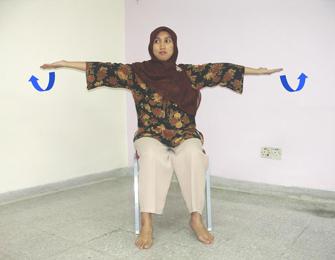 |
|
  |
Breathing exercises
|
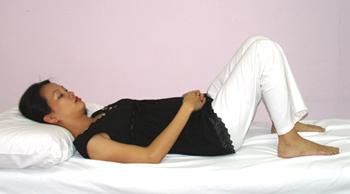 |
Back Stretch
|
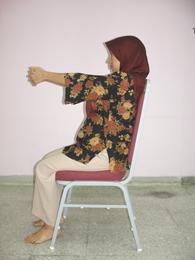 |
Neck Exercises
|
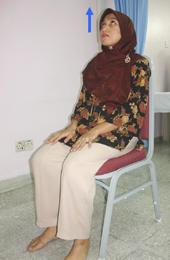 |
|
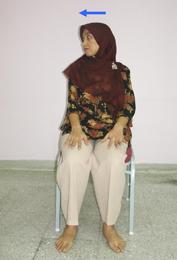 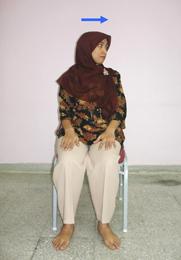 |
|
  |
Abdominal exercise
|
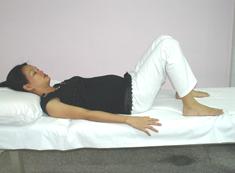 |
|
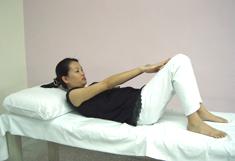 |
|
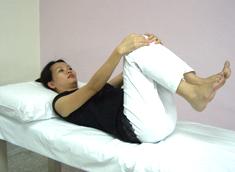 |
Pelvic Tilting
|
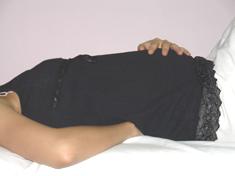 |
|
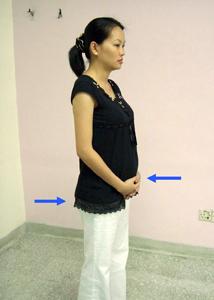 |
Pelvic floor exercise (Kegel’s exercise)
- Any comfortable position with legs slightly apart (Lying, sitting or standing)
- Squeeze your pelvic floor muscle as though you are preventing the flow of urine and bowel action, then feel it being lift up
- Try to hold 4 sec and rest in between 10 sec.
- Repeat the above exercise slowly as many times as possible up to a maximum of 10 seconds hold.
- Repeat the exercise quickly without holding the contraction.
Remember :
- Do breathing exercise in between.
- Take a deep breath in through your nose and out through the mouth.
- Repeat 3 times.
Maintain good posture
1. Standing relaxed with upright posture.
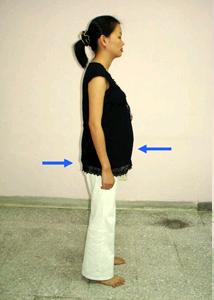 |
2. Sitting upright with spine well supported.
 |
3. Lying on your back with a pillow under the thighs give you extra comfort.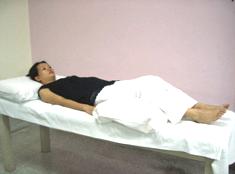 |
4. Side lying with a pillow under your head and one under the knee and thigh prevent strain on the sacroiliac joint. This is a good position for women in late pregnancy. |
5. Lifting in a safe way by bending your knees to lift keeps you from shifting your center of gravity further forward.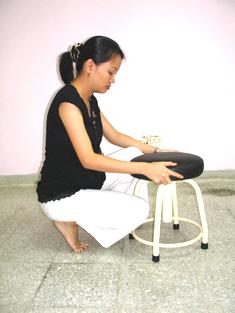 |
Guidelines to ensure safety and well-being during pregnancy with your exercise program
The Do’s (check with your doctor before begins any exercise program)
- If you have been following a regular exercises program before your pregnancy, maintain that program to some degree throughout your pregnancy.
- Exercises does not increase your risk for miscarriage
- If you are a beginner, you should start very slowly and be careful not to over exert yourself.
- Listen to your body signal for the level of exercises performed – the competitive element must be avoided.
- Regular exercises sessions – at least 3 times per week – are safer than intermittent bursts of activity
- Careful ‘warm – up’ should precede vigorous exercises which must be followed by -cooling-down’ or gradual decline in activity.
- Drink plenty of fluids and take frequent break.
- Weight training should emphasize in improving tone especially in the upper body and abdominal area.
- Include relaxation and stretching both before and after exercise program.
- Eat healthy diet that includes plenty of fruits, vegetables and complex carbohydrates.
The Don’ts
- Avoid jerky, bouncing, ballistic movement and activities.
- Never exercises to the point of exhaustion or breathlessness. This is a sign of your body and your baby cannot get the oxygen supply needed.
- Avoid exercise in extremely hot weather.
- Mother heart rate should not exceed 140 beats per minute and vigorous exercises should not be longer than 15 minutes.
- Avoid rocky terrain or unstable ground when running or cycling.
- Avoid contact sport.
- Avoid lifting weights above your head and using weights that strain the lower back muscles.
- Do not over bend any joints.
- Stop exercises immediately if you experiences symptoms such as:
- chest pain,
- vaginal bleeding or uterine contraction, or if your membrane rupture,
- blurred vision, dizziness, fainting,
- irregular heart beats,
- increase swelling in your hand, feet and ankles, and
- Sudden change in body temperature.
- During second and third trimesters, avoid exercises that involve lying flat on your back as this decreases blood flow to your womb.
Exercises to relief backache during pregnancy
Here are simple exercises to relieve backache during pregnancy:
1. Kneel down on your feet and arm with back straight.
|
||
2. Rolling each shoulder forward five times, then back five times.
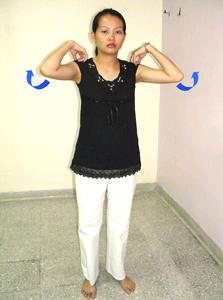 |
||
3. Lie on your back with knees bent and feet on the floor tighten your abdomen and press down until your low back flattens against the floor.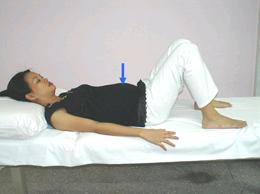 |
||
4. Lie on your back with knees bend, and both feet on the floor. Grasp your left knee and slowly pulling it to your chest. Repeat the same procedure with the left knee.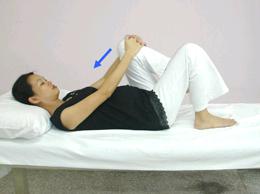
|
Proper clothing
Clothing
- Loose and comfortable clothing which does not constrict at the waist.
- Clothing with extra room in front (cut for pregnancy).
- Maternity gown is the best as pregnancy grows.
Choosing underwear
- Wear the right bra size of wide, long fastening at the back with good support (wide shoulder straps) made from lightweight cotton or cotton blend, during pregnancy.
- For breast-feeding, wear bra with some form of front opening.
- Wear panties that can be wear under your tummy, bikini style or choose a large stretchy style that you can pull over it.
Proper shoes
- Wear well fitting shoes with a slight heel, as this is better for your posture and your back than high heel or totally flat one.
- Wear leather or canvas shoes so that your feet can breathe.
- Athletic shoe with a good support for your arches and heels are good footwear for both home and leisure.
| Last Reviewed | : | 23 August 2019 |
| Writer | : | Dr. Nor Filzatun Borhan |
| Accreditor | : | Pn Hamidah Ishak Pn. Hjh Asiah Mohd Hashim |
| Reviewer | : | Dr. Rafaie bin Amin |


